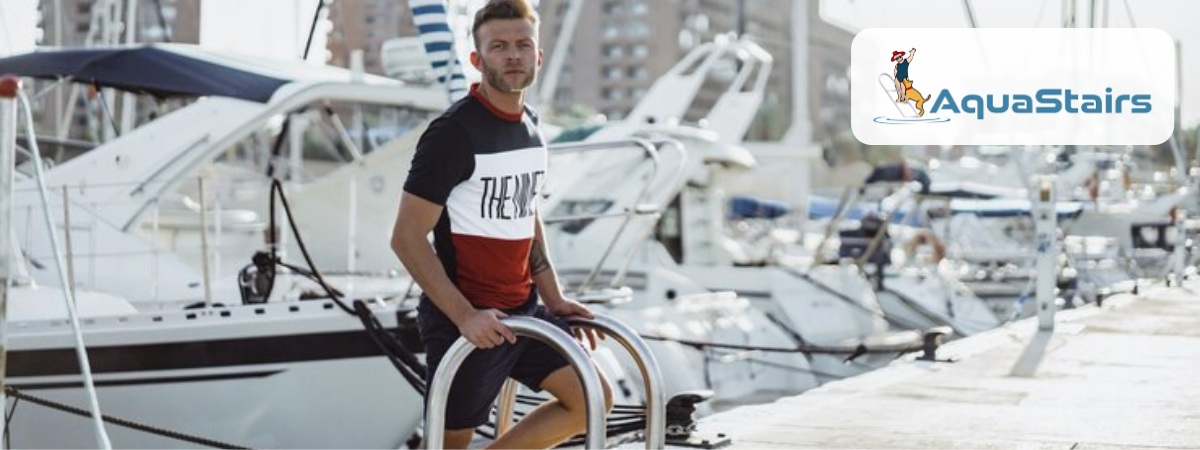
Summary
This guide focuses on dock ladder safety. It offers tips on inspecting, using, and maintaining ladders. It also helps you choose the right ladder for a safe ascent every time. Additionally, we highlight the need for dock ladder maintenance. It's vital to choose the right dock ladder.
Introduction
Having a dock is an essential component of having a good time on the water. However, it is not difficult to forget about dock ladder safety. It happens when someone gets too excited after a successful fishing trip. A fall from a dock ladder, however, might result in severe injuries. It is true despite the fact that the ladder is an essential link between your boat and the pier.
In this article, we will discuss how to make sure you have a safe ascent each time you use a dock ladder.
Why Does Dock Ladder Safety Matter?
In order to enter and exit boats, dock ladders are used. They are exposed to the outdoors all year. As a result, they are prone to rust and wear. Also, the flowing water may cause the ladder to wobble. This makes it an unstable surface for climbing.
One runs the risk of suffering severe injuries if they fall down a dock ladder. These include cuts, fractures, and even brain trauma. Suffocation may occur from falls. This is especially true if the person falls unconscious or becomes stuck under the dock.
Safety Tips for Dock Ladders
To ensure your safe ascent, every time you get on or off your vessel, follow these key dock ladder safety tips:
Before You Climb:
A dock ladder should be inspected for any signs of deterioration before you put your weight on it. Take time to do this. Look for:
- Inspect the Ladder: Dock ladders are designed to withstand extreme circumstances. Every time you use them, you should perform a thorough visual inspection.
- Examine the attachments: Make sure the ladder is securely fastened to the boat and the dock. Verify that every bolt and locking mechanism is fastened firmly.
- Recognize the water level: Variations in the water level may have an impact on the ladder's angle. Ensure the rungs are comfortably close to the dock for departure.
Climbing and Descending Safely:
Now that you have decided it is in good condition, it's the ideal time to climb the ladder. Here are some crucial precautionary measures:
- Three Interface Points: Make sure you have three points of contact at all times. This could be two hands and a foot or one hand and two feet. This helps maintain stability and reduces the risk of falling.
- Face the ladder: Always face the ladder while climbing or descending. This improves balance and helps you see where to place your hands and feet.
- Use the handrails: Dock ladders should have guardrails on both sides. Always use the handrails for added support, especially when boarding or disembarking.
- Take your time: Move slowly and cautiously when using a dock ladder, especially when transitioning from a moving boat.
Additional Safety Measures:
Pre-climb inspections and safe climbing are crucial, but there are other safety aspects to consider:
- Carry Light Loads: Avoid carrying heavy items while climbing. Make multiple trips or ask for assistance if necessary.
- Be aware of weather conditions: High winds, rain, or icy weather can make ladders slippery, increasing the risk of falls. Take extra precautions in such conditions.
- Children and Pets: Always supervise children and pets around dock ladders. Their inexperience could lead to falls or accidents.
Dock Ladder Maintenance:
Regular dock ladder maintenance is essential to ensure its safety:
- Lubricate Moving Parts: Regularly oil all moving parts, including hinges and locks, to keep them functioning smoothly.
- Winter Storage: In cold climates, remove and store the ladder to protect it from freezing temperatures and ice damage.
- Inspect for Damage: After each use, check the ladder for cracks, loose rungs, or other damage.
Pros and Cons of Dock Ladders
| Pros | Cons |
| Provides safe access to boats | Requires regular maintenance to prevent rust and wear |
| Safe-spacing design | |
| Available in various lengths for different water levels |
Choosing the Right Dock Ladder:
Consider the following factors when selecting a dock ladder:
- Length: The ladder should be long enough to allow easy access at various water levels.
- Material: Choose stainless steel or aluminum ladders for durability and corrosion resistance.
- Rung Design: Opt for ladders with rungs that offer a good grip even when wet. Look for thick, textured rungs for added safety.
Additional considerations:
- Dive platforms are not dock ladders. Avoid diving into the water from a dock ladder.
- If you feel uneasy while using the ladder, seek assistance.
- Report any broken dock ladders to the marina or dock owner for repair or replacement.
Conclusion
Dock ladder safety should always be a priority to prevent accidents and ensure a safe boating experience. Routine inspections, proper maintenance, and adhering to safety guidelines are essential. Choose the right ladder based on your needs and the dock's condition.
FAQs
1. Why is dock ladder safety important?
A: Dock ladder safety is crucial to prevent serious injuries from falls and to ensure stable access to boats.
2. How often should I inspect my dock ladder?
A: Inspect your dock ladder before each use and regularly to keep it in good condition.
